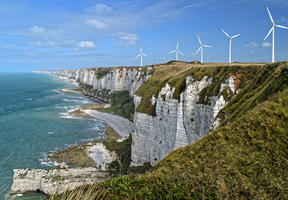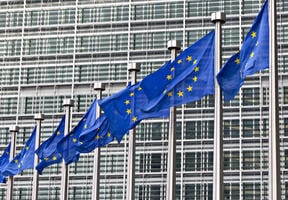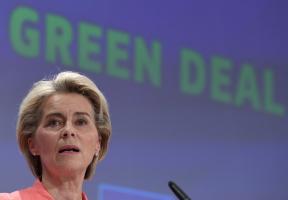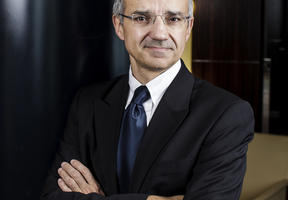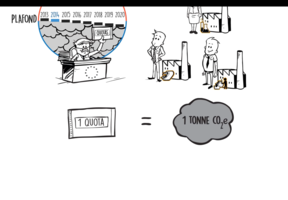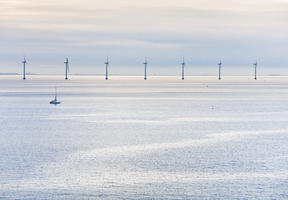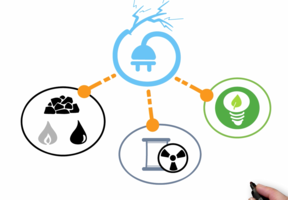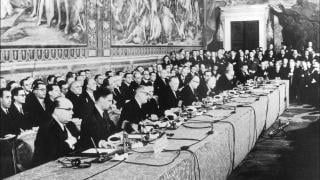1950 - It all began with the ECSC
Energy was the starting point of European construction. On May 9, 1950, French foreign minister Robert Schuman proposed the creation of the European Coal and Steel Community (ECSC). May 9 was later to become "Europe Day"1.
The ECSC was established in 1952 when France, West Germany, Italy, Belgium, Luxembourg and the Netherlands decided to create a common market for coal and steel. The six countries handed over their powers to a High Authority, thus making the ECSC the first European organization to be founded on the principles of supranationalism.
The intention was to make another war between France and Germany "materially impossible" and to ensure the modernization and profitable development of the European coal and steel industries. Strategic and military concerns were also part of the equation, at a time when the Cold War was beginning to up.
1957 - Euratom a novel initiative
This sense of common purpose resurfaced five years later on March 25, 1957, when the same six countries signed two treaties in Rome that laid the foundation for a unified Europe. The first treaty created the European Economic Community (EEC), while the second established the European Atomic Energy Community (Euratom).
The Euratom Treaty was designed to promote the peaceful use of and introduce a common system for procuring supplies of fissile materials, such as uranium. The objective was to enhance Europe's energy independence and guarantee the supply of raw materials in the wake of the Suez Crisis, which threatened to cut off oil supplies. Several regulations of the treaty are still in force today.
1987 – Toward market liberalization
Under the impetus of Jacques Delors, President of the European Commission, the signature of the Single European Act (SEA) intended to create a single market by removing the barriers that hindered the free circulation of goods, services, capital and people. And so began the liberalization of the energy sector: competition among operators that became Trans European, separation of energy production, transportation and distribution activities, introduction of market prices. But each Member States remained decision-makers in determining their own .
2000 - Combating climate change
At the turn of the century, a new challenge appeared: the fight against . - It was confirmed that greenhouse gas emissions, in particular CO2, generated by anthropological activities, are a powerful factor in increasing the Earth’s average surface temperature. In 2005 “a carbon market” was established to penalize major industrial sectors with the greatest carbon dioxide emissions. The idea of a gradual transition from fossil energies to renewable energies also began to take hold.
2008 – The symbolic formula of 3x20
In 2008, European leaders adopted an “energy-climate package”. It set a target for 2020, and in recognition of the collective agreement, the committee decided to transpose the target as a formula: the 3 times 20, or 3x20 network. Member States had to reduce greenhouse gas emissions by 20%, improve by 20% and increase to 20% the share of renewable energies in final energy consumption. Its success was relative, and so in 2014, the European Union adapted the three objectives for 2030.
2020 - A green deal for Europe
The purpose of the green deal adopted by the European Union in early 2020 is to put an end to net greenhouse gas emissions by 2050. They must be reduced by at least 55% by 2030 in comparison with values from 1990. Europe would thereby become the first “climate neutral” continent, i.e. it would achieve “carbon neutrality”. The plan is based in particular on the phasing out of fossil energies, electric mobility, technological innovation, the circular economy, building renovation and sustainable agriculture.
2022 – The search for "energy sovereignty"
Russia's invasion of Ukraine in February 2022 forced the European Union to put the idea of "energy sovereignty" back at the forefront of its concerns, i.e., the need not to rely too heavily on outside sources for its energy supplies. In 2021, Russia provided 30% of European coal and imports and 40% of natural gas imports. By 2022, the EU has stopped imports of Russian coal and eliminated 90% of Russian oil imports. By the end of 2022, the share of Russian gas in Europe had fallen to less than 10%, while purchases of in the rest of the world, including the United States, were growing at a record pace.
Source :
- Europa
